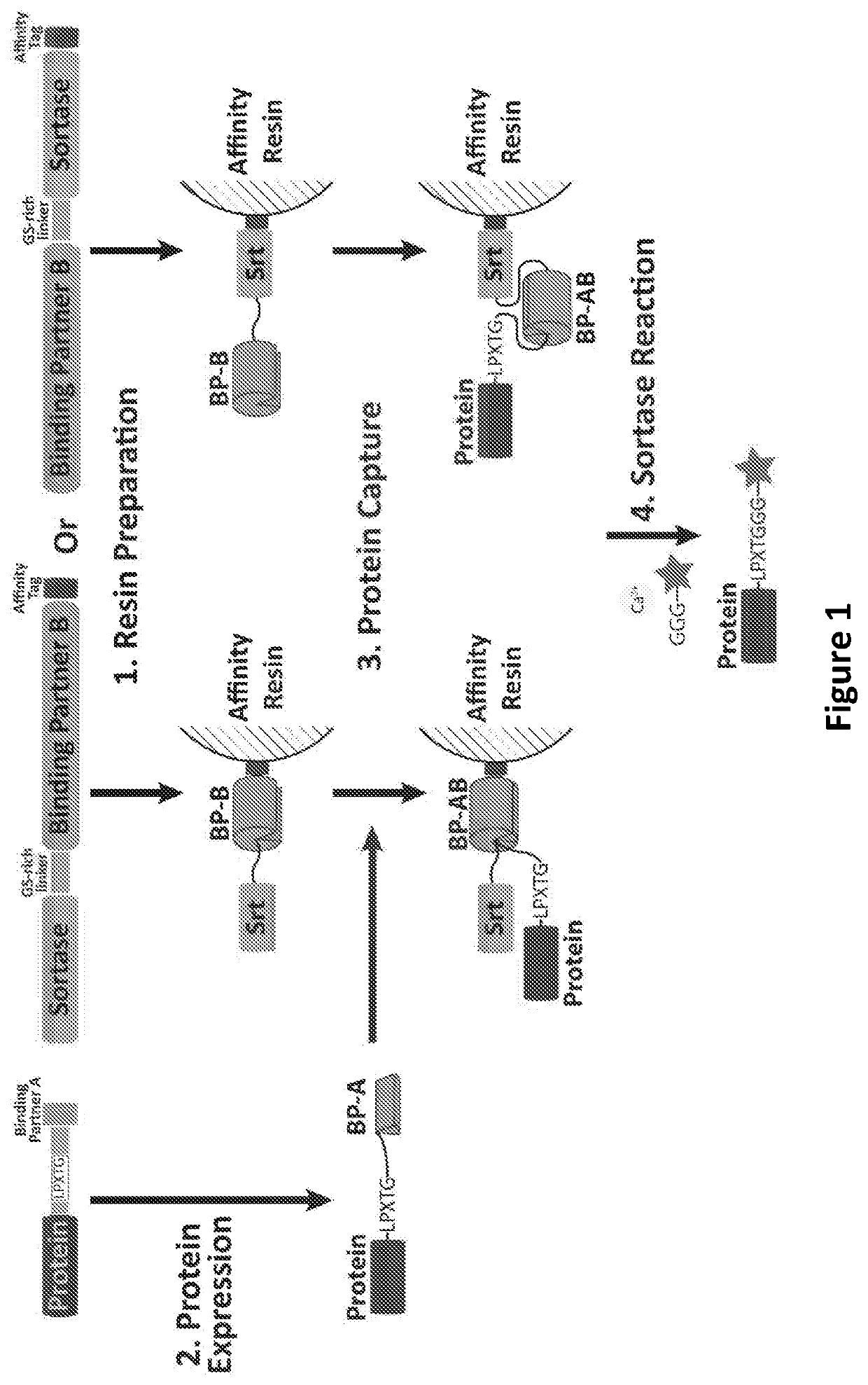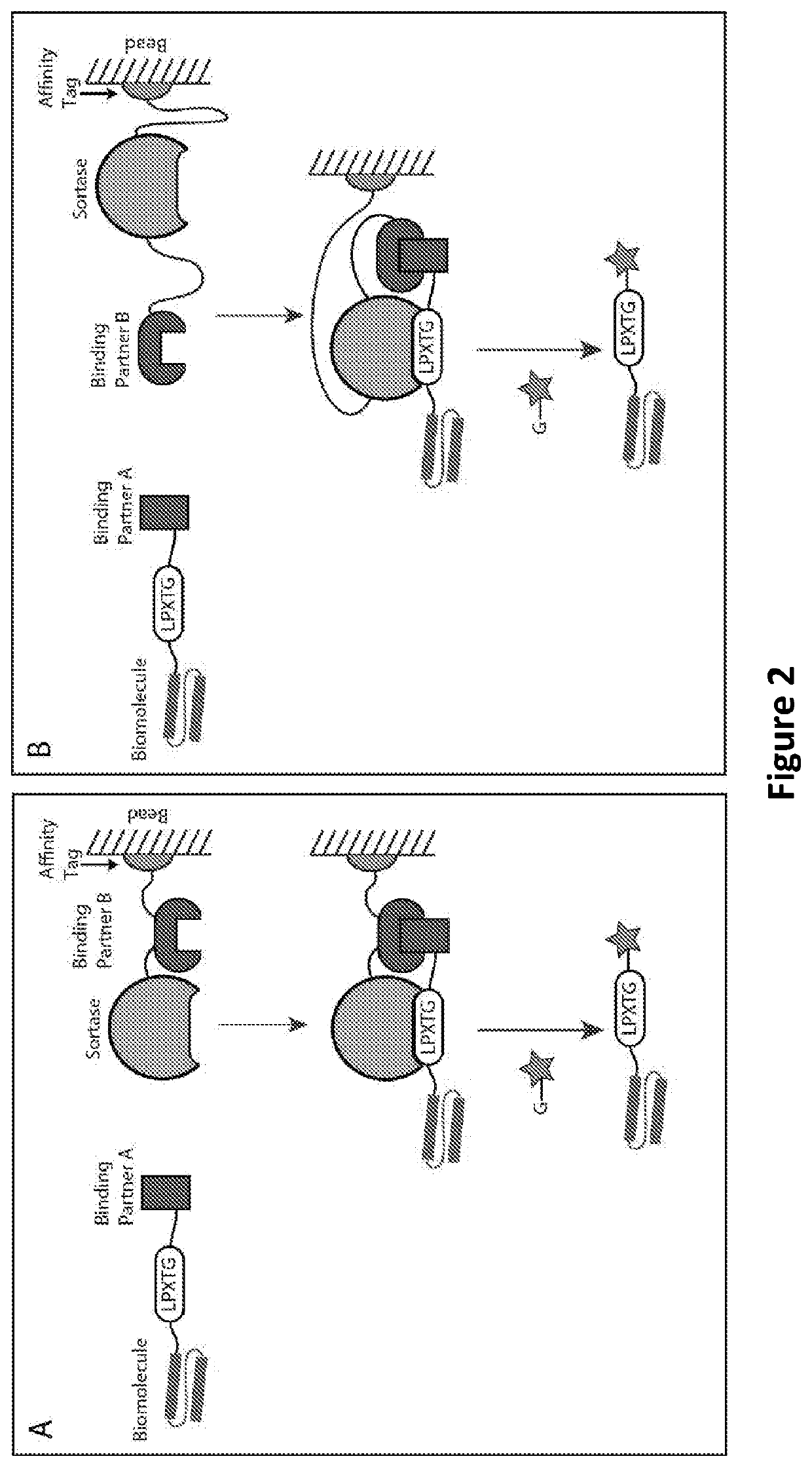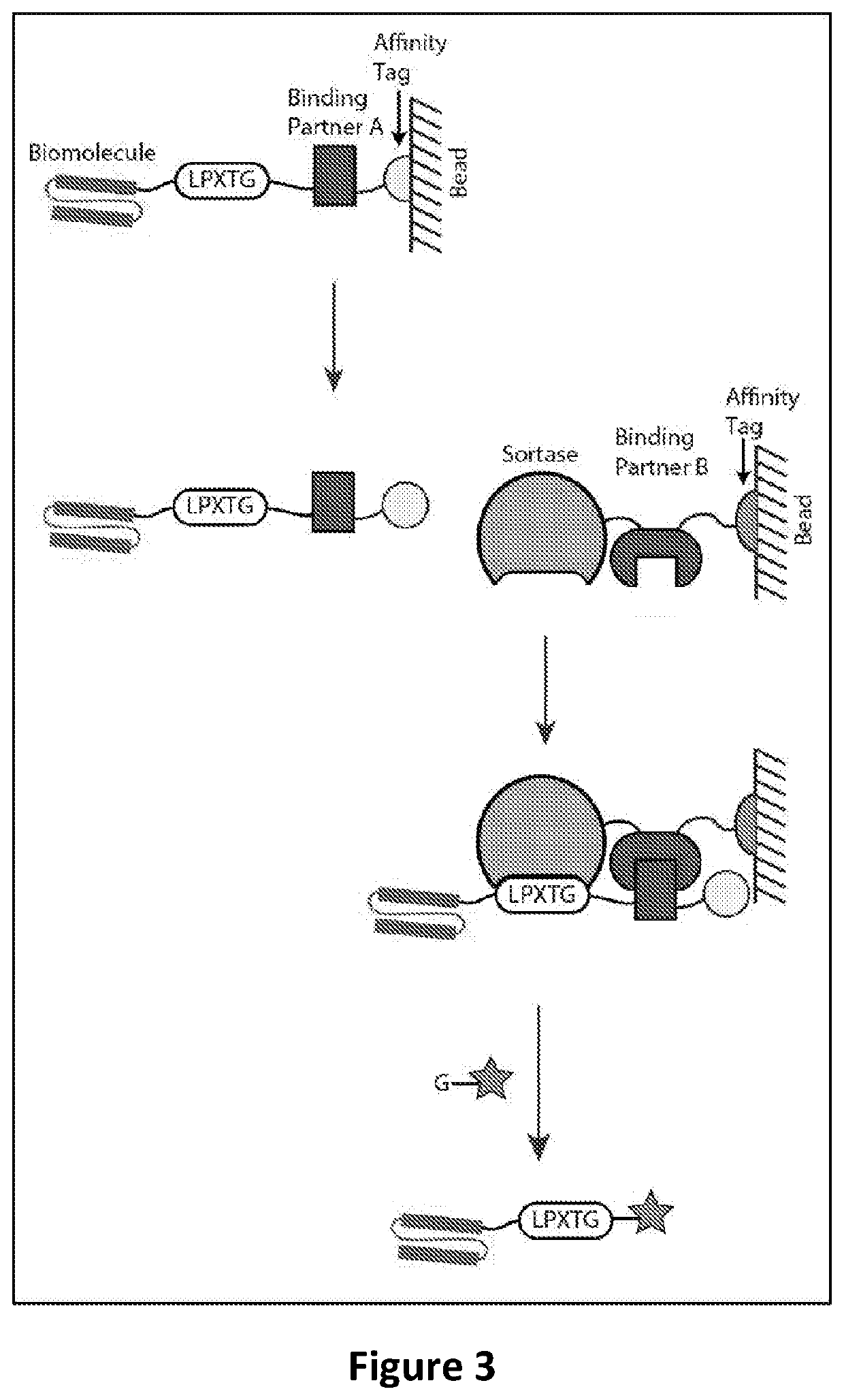Proximity-based sortase-mediated protein purification and ligation
a sortase and protein technology, applied in the field of proximity-based sortase-mediated protein purification and ligation, can solve the problems of poor conjugation efficiency, protein conjugates still heterogeneous, and the method used can significantly influence the function of protein and/or cargo, and the homogeneity of the resulting conjugate,
- Summary
- Abstract
- Description
- Claims
- Application Information
AI Technical Summary
Benefits of technology
Problems solved by technology
Method used
Image
Examples
example 1
-Based Sortase-Tag Expressed Protein Ligation (STEPL): Combining Protein Purification and Site-Specific Bioconjugation Using Binding Partners
[0154]Generally, in one embodiment, proximity-based sortase ligation is an expressed protein ligation technique with 2 components. The first comprises a fusion protein containing sortase (Srt), a calcium-dependent transpeptidase, as well as one member of a binding partner protein pair (BP-B) (FIG. 1). The binding partner protein entity can be placed either N-terminal (FIG. 1—upper right) or C-terminal (FIG. 1—upper center) to sortase. Either protein is connected via a glycine / serine-rich linker. An affinity tag is placed at the C-terminal end of the fusion protein.
[0155]For the first portion of the technique (FIG. 1-1.), the fusion protein is expressed and then isolated on an affinity resin corresponding to the affinity tag (FIG. 1—middle center or FIG. 1—middle right). Possible affinity tag / resin pairings include, but are not limited to, His t...
example 2
-Based Sortase-Tag Expressed Protein Ligation (STEPL): Combining Protein Purification and Site-Specific Bioconjugation Using Binding Partners
[0162]In this study, a bacterial sortase enzyme is utilized for targeting ligand purification and site-specific conjugation. This method utilizes two protein constructs, each of which includes a binding sequence for one member of a pair of binding partners (e.g., binding partner A and binding partner B).
[0163]In this Example, to generate the construct for the capture fusion protein, sortase (Srt) (e.g., SrtA) is cloned in frame and in series so that it is placed, with an intervening linker (e.g., a flexible GS-rich linker), N-terminal to binding partner B (BP-B), which, in turn, is N-terminal to an affinity tag (e.g., a His tag) (FIG. 1—center (1.) and FIG. 2A—upper right). This fusion protein is then expressed and isolated on an affinity resin (e.g., an affinity column or beads) via the affinity tag (FIG. 1—center (1.) and FIG. 2A—upper right)...
example 3
-Based Sortase-Tag Expressed Protein Ligation (STEPL): Combining Protein Purification and Site-Specific Bioconjugation Using Binding Partners
[0166]Similar to the study of Example 2, in this study, a bacterial sortase enzyme is also utilized for purification and site-specific conjugation of a protein of interest. This method also utilizes two protein constructs, each of which includes a binding sequence for one member of a pair of binding partners (e.g., binding partner A and binding partner B).
[0167]In this Example, to generate the construct for the capture fusion protein, sortase (Srt) (e.g., SrtA) is cloned in frame and in series so that it is placed, with an intervening linker (e.g., a flexible GS-rich linker), C-terminal to binding partner B (BP-B) and N-terminal to an affinity tag (e.g., a His tag) (FIG. 1—right (1.) and FIG. 2B—upper right). This fusion protein is then expressed and isolated on an affinity resin (e.g., an affinity column or beads) via the affinity tag (FIG. 1—...
PUM
| Property | Measurement | Unit |
|---|---|---|
| Affinity | aaaaa | aaaaa |
Abstract
Description
Claims
Application Information
 Login to View More
Login to View More - R&D
- Intellectual Property
- Life Sciences
- Materials
- Tech Scout
- Unparalleled Data Quality
- Higher Quality Content
- 60% Fewer Hallucinations
Browse by: Latest US Patents, China's latest patents, Technical Efficacy Thesaurus, Application Domain, Technology Topic, Popular Technical Reports.
© 2025 PatSnap. All rights reserved.Legal|Privacy policy|Modern Slavery Act Transparency Statement|Sitemap|About US| Contact US: help@patsnap.com



